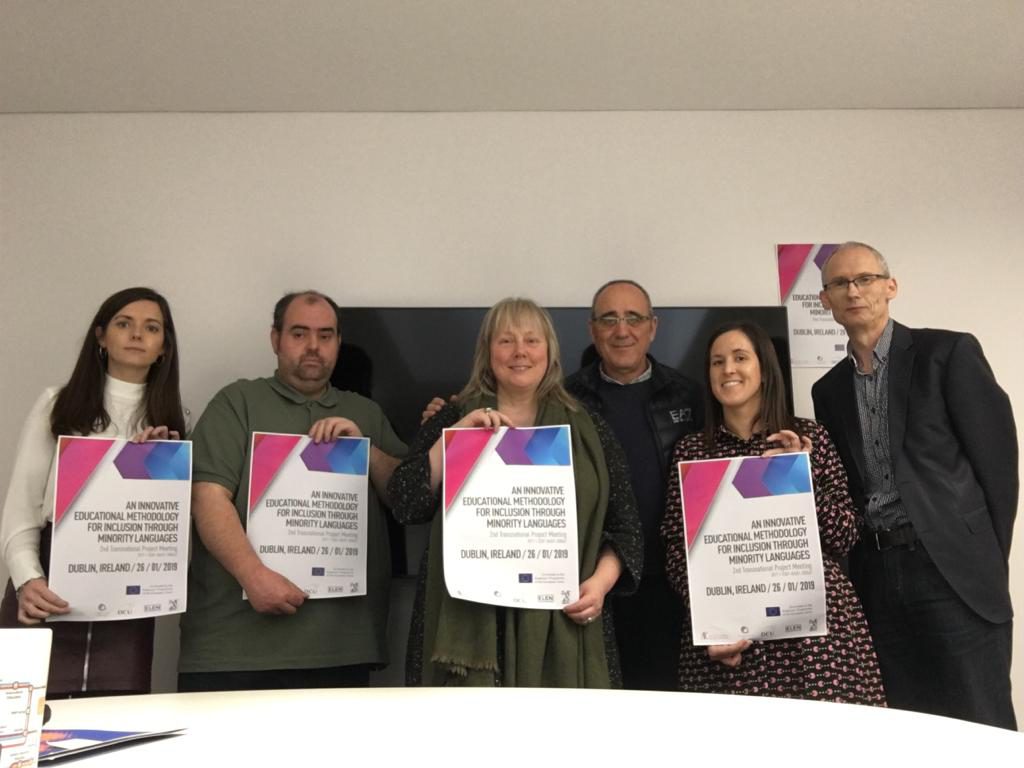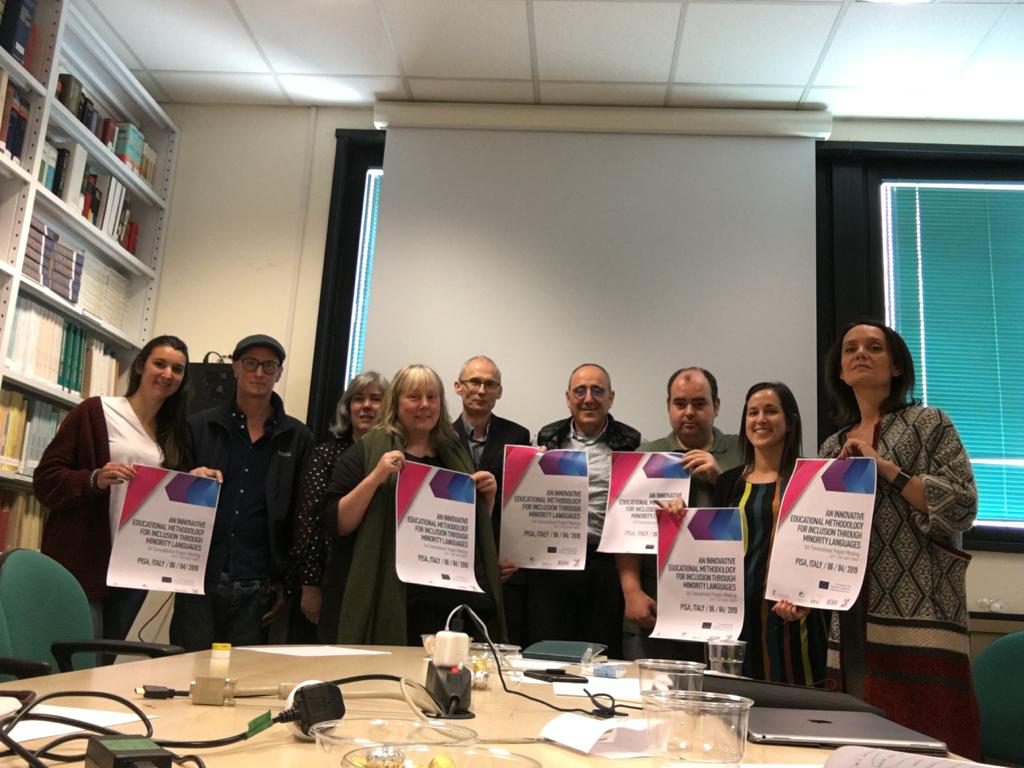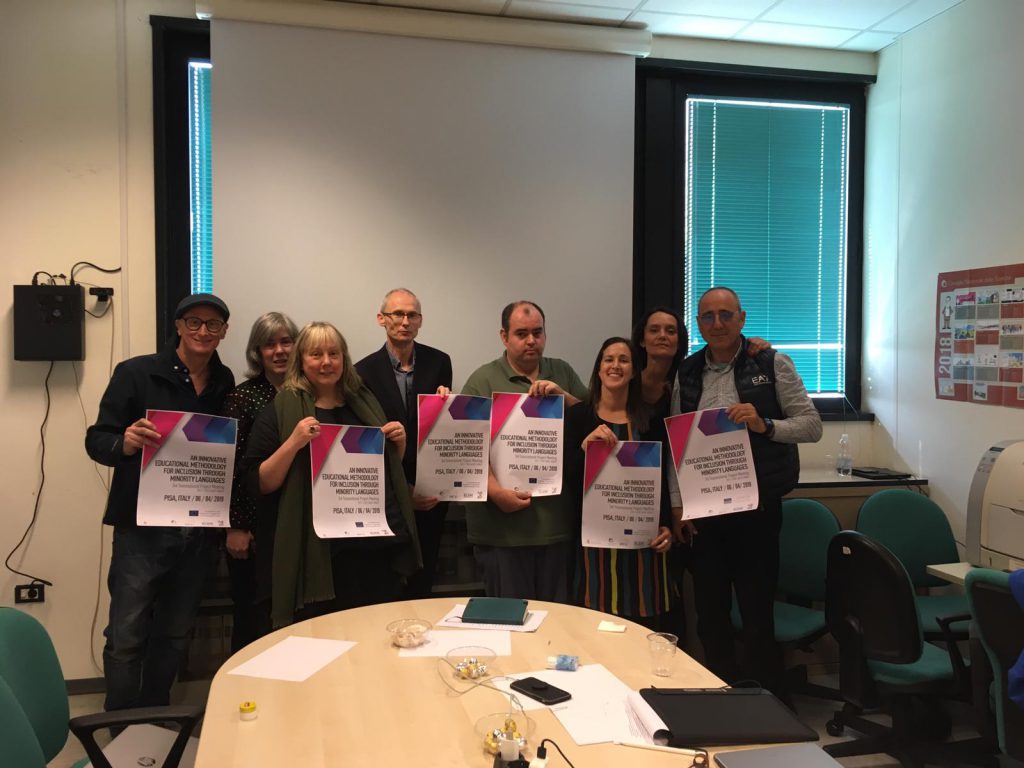THE PROJECT
More laws are being created in the European Union to promote new models for multilingual education through the use of the minority languages in a region as vehicular languages. A clear example of this new direction is the new pedagogical model implemented in our region called the Dynamic Multilingual Project. This new model reinforces minority languages, in this case Valencian, and English, as important pedagogical tools necessary for the promotion of multilingualism. However, the fact that secondary schools are committed to teaching in English and Valencian can lead to inclusion and access difficulties for migrant and refugee groups who have not yet mastered these languages.
This is a problem currently happening all across Europe, especially in countries that use minority languages as cultural and pedagogical tools, like Wales or Ireland. In Wales, a 21st century school project is being promoted to include Welsh as an educational language, in Italy all regional languages have the same status as Italian and their use is compulsory in the schools and in Ireland, there is a significant commitment to use Gaelic more commonly in schools.
Given the explicit and real need to promote and inclusive and high quality education for all students, especially young migrants and refugees who have language barriers to an equal access to education with minority language as a vehicular educational language, the INNOVATIVE EDUCATIONAL METHODOLOGY FOR INCLUSION THROUGH MINORITY LANGUAGES has been suggested.
This project has created a crosscutting network to contribute to an equal inclusion into bilingual educational systems of young migrants, refugees, or students with an educational lag. Five internationally prestigious entities have participated in this project: Acció Cultural del País Valencià (ACPV) from Spain, European Language Equality Network (ELEN) from france and Europe, IAITH from UK, Consiglio Nazionale delle Ricerche (CNR) from Italy and Institute of Education of Diublin City University (IoE DCU) from Ireland, plus several secondary schools across Europe, teachers’ associations, high school federations, and policy makers.
To this end, we have adapted a new and innovative methodology based in Speech Community Integration (SCI). This method focuses on the repeated communication patterns that can be easily learned and profited from with practise. As the student repeats interactions, older lessons are reinforced, newer ones are more quickly assimilated. This innovative method allow developing the social, cultural, academic, and linguistic inclusion of students in an innovative way. This system promotes a new vision of educational inclusion, approaching it from a holistic perspective, which is why it is considered that educational inclusion must be accompanied by a full social and cultural inclusion.
In order for a migrant student with special educational needs (SEN) to overcome the language barriers inherent to the access to educational centers with a minority language as a educative vehicular language, it is necessary to make curriculum adaptations. It is essential to encourage their interest in this new culture and in the advantages that the mastery of these languages will grant them. To this end, the interventions should not only be carried out during school hours, but also outside of them, through extracurricular activities, and they should not only include teachers, but the entire educational community and social entities. A common effort must be done to achieve an inclusive and multilingual education.
This project has a duration of 24 months, and thanks to the creation of a network of social entities (in collaboration with teachers and secondary schools), transnational meetings and multiple activities yield an important intellectual result: THE METHODOLOGICAL GUIDE FOR INCLUSION IN CENTERS WITH MULTILINGUAL PROGRAMS, which model is based on a conceptual model emerged from the results of several researches.
This material aimed to the first year of secondary education allow centers, teachers, and students to eliminate the access barriers of young migrants and SEN to centers that teach in minority languages, through four main components that boost the acquisition of this new language: socio-cultural, linguistic, academic, and cognitive processes.
This result include a great variety of high-quality materials such as curriculum adaptations, educational units, OERs, an extracurricular activity program, the development of the innovative CLIL methodology through the Prisma Model, and learning for inclusion.
These materials are spread among secondary schools thanks to a multiplier event and the support of prestigious entities, achieving a great impact in more than 20 secondary schools in the year after its completion, and hopefully this will become a tool promoted and used throughout the EU in the next 5 years.
TRANSNATIONAL MEETINGS
M1- FIRST TRANSNATIONAL MEETING
Host: ACPV (Valencia).
Date: 11th-12th January 2018.
Description: First transnational meeting made in Valencia, aimed to close and sign all the agreements developed during the project’s preparation stage by the different commissions: coordination, tasks assignment, commitment, economic, and logistical agreements…
M2- SECOND TRANSNATIONAL MEETING
Place: DCU (Dublin)
Date: January 26th, 2019.
Description: Second transnational meeting made in Dublin, aimed to review the materials created by the commission for the development of the INTELLECTUAL PRODUCT O1 (Review of the index, Review of the task and subtask diagram assigned to O1, Review changes, add improvement suggestions and, if necessary, redistribute new tasks and subtasks, definition of the quality, style, and form standards of the entire document) and evaluate the implementation phase, evaluating all the activities carried out so far, and suggestions for improvement.
M3- THIRD TRANSNATIONAL MEETING
Place: CNR (Pisa)
Date: 4th, April 2019.
Description: In the last meeting the partners made the preparation of dissemination phase and the last evaluation activities. Sspecially the following issues were addressed:
- The presentation and evaluation of all intellectual, tangible, and organizational results.
- The evaluation of the whole project regarding the planned objectives and results.
- Reviewing the results’ diffusion, evaluation, and improvement plan.
- The development of the project’s final report after having reviewed the final reports of every commission, previously validated by the project’s quality and management commission.
- The launch of the sustainability commission.
DISSEMINATION EVENTS
E1- MULTIPLIER EVENT
Place: Paiporta (Valencia)
Date: 2th July, 2019
Description: The diffusion of results was a goal as important as the results themselves, so it was essential to promote their visibility and ensure that prestigious multipliers echo them in the field of secondary education.
To achieve a large impact, a great media and visual event was held in collaboration of Servicio de Formación del Profesorado – CEFIRE in Paiporta – Valencia.
Representatives of all political parties, of educational institutions, media, heads of secondary schools, teachers’ training centers, teacher unions, parent’s associations, and linguistic promotion networks participed in this launch event, in order to reach agreements to achieve a full diffusion and implementation of the project’s results.
OTHER ACTIVITIES










